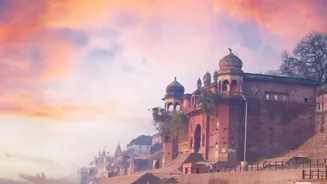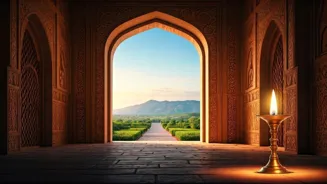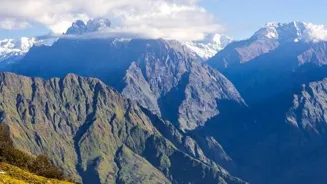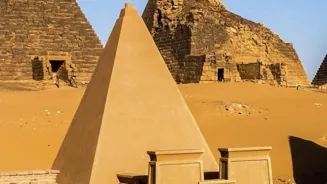Discover the hidden cultural gems of Varanasi's ghats! Dive into 8 insights to deepen your spiritual journey
Varanasi, or Kashi, as many lovingly call it, is not just a city; it's an experience. And the
heart of this experience beats along its ghats – the steps leading down to the holy Ganga.
Millions of pilgrims and tourists come every year to walk these ghats, but few truly understand the depth of culture and tradition they represent. Forget the usual tourist brochures!
Let's dive into eight lesser-known cultural insights about Varanasi's ghats that will give you a whole new appreciation for this spiritual haven.
Ghats in Varanasi hold deep cultural and religious significance
Firstly, the ghats aren't just a random collection of steps. Each ghat has its own unique history and significance. Take Manikarnika Ghat, for example, one of the two cremation ghats. Hindus believe that cremation here liberates the soul from the cycle of rebirth.
Then you have Dashashwamedh Ghat, famous for its evening Ganga Aarti which is a visual delight, dedicated to Lord Brahma's sacrifice of ten horses. The names themselves often tell a story, hinting at mythological events, deities, or even historical figures connected to that particular spot.
Knowing this adds a layer of understanding to your walk.
Ganga Aarti: a deeply symbolic ritual connecting devotees to the divine
Secondly, the Ganga Aarti is more than just a pretty sight with chanting and incense. It's a deeply symbolic ritual. The synchronized movements of the priests holding multi-tiered lamps represent the elements – earth, water, fire, air, and ether – and their offering to the river goddess.
The rhythmic chants are not just prayers; they are sonic vibrations believed to purify the atmosphere and connect devotees to the divine. The sheer devotion and energy that permeates the air during the Aarti is palpable, leaving you feeling cleansed and uplifted.
Observing the Aarti with this knowledge transforms it from a spectacle into a profoundly spiritual experience.
Sadhus and ascetics renounce possessions for enlightenment, not homeless
Thirdly, the sadhus and ascetics you see meditating along the ghats are often misunderstood. They aren't simply homeless people; they are individuals who have renounced worldly possessions to pursue spiritual enlightenment.
They often belong to different 'akharas' (sects) with distinct philosophies and practices. Their appearance, often with matted hair and ash-smeared bodies, symbolizes detachment from material comforts and a commitment to inner exploration.
Observing them with respect and understanding their quest for truth can be a humbling experience. A polite namaste is far more appropriate than a curious stare.
Colorful boats on the Ganga in Varanasi offer an authentic experience and livelihood
Fourthly, the colourful boats gliding along the Ganga aren't just for sightseeing. They are an integral part of the Varanasi experience and a source of livelihood for many families.
The boatmen have inherited their trade through generations, possessing an intimate knowledge of the river's currents and moods. A pre-dawn boat ride at sunrise, known as "Subah-e-Banaras" is a must-do.
It offers a unique perspective of the ghats coming alive with activity, the soft glow of the rising sun painting the sky, and the gentle lapping of the water against the boat. It is more than just a ride; it's a journey into the heart of Varanasi.
Varanasi's ghats symbolize life's rhythm, mortality, and peace
Fifthly, the seemingly chaotic activity along the ghats – pilgrims bathing, priests chanting, vendors selling wares – is actually a carefully orchestrated rhythm. It's a microcosm of life itself, with birth, death, and everything in between unfolding in plain sight.
This constant reminder of mortality and impermanence is a key element of Varanasi's spiritual significance. While it may seem overwhelming at first, taking a moment to observe and absorb the energy will reveal a sense of acceptance and peace amidst the apparent chaos.
Its is like an acceptance of reality.
Varanasi's inclusive ghats symbolize harmony beyond religion
Sixthly, while Varanasi is deeply rooted in Hindu traditions, its ghats also bear witness to a more inclusive history. The Tulsi Ghat, for instance, is associated with the renowned poet Tulsidas, the author of the Ramcharitmanas, who lived and composed on it.
Even non-Hindus are welcome to experience the spiritual atmosphere of the ghats, as long as they approach the space with respect and sensitivity. This underlying message of acceptance and co-existence is a testament to the city's enduring spirit of harmony.
It is a reminder that spirituality transcends religious boundaries.
AI Generated Content. Glance/InMobi shall have no liability for the content










